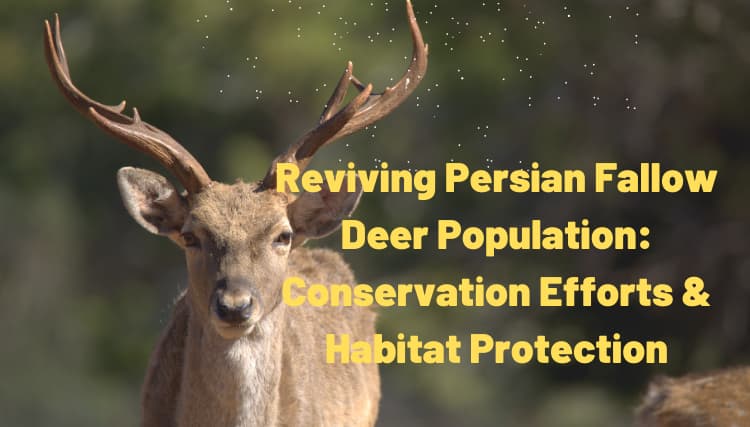
Taxonomi
Kingdom | Animalia |
| Phylum | Chordata |
| Class | Mammalia |
| Order | Artiodactyla |
| Family | Cervidae |
| Subfamily | Capreolinae |
| Genus | Dama |
| Species | Dama dama |
| Subspecies | Dama dama mesopotamica |
If you’re a wildlife enthusiast, you may have heard of the Persian fallow deer. This subspecies of fallow deer is native to Iran and has faced several challenges over the years. The population of Persian fallow deer has been declining due to habitat loss, hunting, and poaching. Back in 1956, there were only about 50 individuals left in the wild.
However, conservation efforts have been made to protect and increase the population of this beautiful species. These efforts include captive breeding and habitat restoration. As of 2021, the population has increased to around 400 individuals in the wild.
Despite these positive developments, Persian fallow deer are still considered endangered on the IUCN Red List. In this article, we will dive deeper into some interesting facts about Persian fallow deer and explore how conservationists are working hard to preserve this unique subspecies.
So where exactly are fallow deer from? Let’s find out as we explore more about Persian fallow deer!
Habits and Lifestyle, Distribution and Habitat of Persian Fallow Deer

Persian fallow deer are a unique species native to Iran. Their natural habitat includes forested areas, grasslands, and mountainous regions. These beautiful creatures have adapted well to their environment and have developed specific habits and lifestyles that help them thrive in the wild.
Distribution and Habitat
Persian fallow deer can be found in several regions of Iran, including the Zagros Mountains, the Caspian forests, and the Golestan National Park. They typically prefer to live in areas with dense vegetation cover where they can hide from predators. They also need access to water sources such as rivers or streams.
These deer have a home range of up to 1,000 hectares which they use for feeding, mating, and raising their young. They are social animals that often gather in groups of up to 20 individuals.
Habits and Lifestyle
Persian fallow deer are primarily herbivores that feed on a variety of plants including grasses, leaves, fruits, bark, and twigs. They have a unique digestive system that allows them to extract nutrients from tough plant material.
During the breeding season (September-October), males become more aggressive towards each other as they compete for females’ attention. The dominant male will mate with several females within his group.
Females give birth to one or two fawns after a gestation period of about seven months. The mothers take good care of their young until they are old enough to fend for themselves.
Threats to Persian Fallow Deer Population
The population of Persian fallow deer has significantly declined over the years due to habitat loss caused by deforestation and urbanization. Hunting is another major threat as these animals are often hunted for their meat or antlers.
Conservation efforts have been put in place by various organizations such as the Department of Environment in Iran to protect these animals and their natural habitat. These efforts include creating protected areas, reforestation, and captive breeding programs.
Significance of Persian Fallow Deer Population on Ecosystems and Local Communities
The Persian fallow deer population is a vital component of the ecosystems in which they inhabit. These deer play a crucial role in maintaining the balance of ecosystems by controlling vegetation growth and providing food for predators. In this section, we will discuss the significance of the Persian fallow deer population on ecosystems and local communities.
Importance in Ecosystems
Persian fallow deer are herbivores that feed on a variety of plants, including grasses, leaves, and fruits. By consuming vegetation, these deer help to control the growth of plant populations and prevent overgrowth. This prevents other species from being outcompeted for resources, leading to increased biodiversity within an ecosystem.
Furthermore, Persian fallow deer provide food for predators such as wolves and big cats. This helps to maintain predator-prey relationships within an ecosystem and ensures that the ecosystem remains healthy.
Economic Benefits for Local Communities
The presence of a Persian fallow deer population in an area can attract ecotourism, which can bring economic benefits to local communities. Ecotourism involves visitors traveling to natural areas to learn about the environment while engaging in activities that promote conservation efforts.
Tourists who visit areas with Persian fallow deer populations can participate in activities such as wildlife viewing, hiking, or photography tours. These activities generate income for local businesses such as hotels, restaurants, and tour operators.
Negative Impacts of Decline
The decline of the Persian fallow deer population can have negative impacts on the ecosystem. For instance, if there are no herbivores present to control vegetation growth, it could lead to overgrowth which could negatively affect other species’ survival chances.
Moreover, if predators lose their source of food due to a decline in prey species like Persian fallow deer it could lead them into human settlements resulting in conflicts between humans and animals.
Conservation Efforts
Conservation of the Persian fallow deer population can lead to the protection of other endangered species that share the same habitat. By protecting their natural habitats, we can also preserve other species and ensure that they remain healthy.
Local communities can benefit from conservation efforts through employment opportunities in ecotourism and conservation initiatives. These opportunities provide a source of income for local people while promoting environmental conservation.
Cultural Significance
The preservation of the Persian fallow deer population can also contribute to the cultural heritage and traditional practices of local communities. For example, some indigenous communities consider these animals sacred or have folklore associated with them.
Current Status of Persian Fallow Deer Population
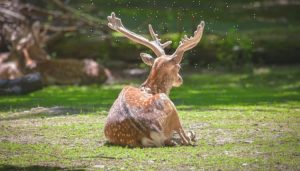
The Persian fallow deer population is currently in a critical state and listed as critically endangered. The population is estimated to be around 400 individuals, which is a significant decline from the past decades. The main threats to the population are habitat loss and poaching.
Threats to the Population
Habitat loss is one of the primary reasons for the decline in the Persian fallow deer population. Deforestation, urbanization, and agricultural expansion have resulted in a reduction of available habitat for these animals. As their habitat shrinks, it becomes more difficult for them to find food and shelter, which leads to stress and malnutrition.
Poaching is another major threat to the Persian fallow deer population. These animals are hunted for their meat, antlers, and skin. They are also captured alive for illegal trade or kept as pets by some people. Poaching has been rampant due to the high demand for these animals in local markets.
Conservation Efforts
Conservation efforts have been implemented to help increase the Persian fallow deer population. Captive breeding programs have been established where animals are bred in captivity and then released into protected areas once they reach adulthood. This method has proven successful in increasing populations of other endangered species such as pandas.
Another conservation effort is habitat restoration where degraded habitats are restored to their natural state to provide suitable environments for these animals to thrive.
The Success of Conservation Efforts
Despite conservation efforts being put in place, it is still uncertain whether they will be successful in saving this species from extinction. The success rate may vary depending on factors such as habitat quality and availability, disease outbreaks among captive populations, or poaching incidents that may occur even within protected areas.
Continued conservation work is necessary if we want to prevent the extinction of this beautiful creature. We need more funding support from governments and NGOs alike so that we can continue our efforts towards preserving these animals.
Conservation Efforts for the Persian Fallow Deer Population
The Persian fallow deer population is classified as endangered on the IUCN Red List, making conservation efforts crucial for their survival. In the past, the deer population faced a significant decline due to habitat loss and hunting, but reintroduction efforts have helped increase their numbers. Here are some of the conservation efforts that have been put in place to ensure the survival of this valuable species.
Reintroduction Efforts
In the past, Persian fallow deer were hunted extensively, leading to a significant decline in their population. However, concerted efforts have been made to reintroduce these animals into their natural habitats. One such effort was the establishment of a breeding program at the Tehran Zoological Garden in Iran.
Individuals from different populations were brought together and bred under controlled conditions to ensure genetic diversity. Once they had reached maturity, some individuals were released into protected reserves where they could thrive without fear of hunting or other threats.
Establishment of Protected Reserves
Protected reserves have also played a critical role in increasing the Persian fallow deer population. These reserves provide a haven for these animals where they can live and breed without fear of predators or hunters.
One such reserve is Khojir National Park located near Tehran in Iran. This park covers an area of over 9,000 hectares and has become an important sanctuary for many endangered species including Persian fallow deer.
Grassland Management Programs
Grassland management programs have also contributed significantly to the increase in the Persian fallow deer population. These programs involve managing grasslands through controlled burning and grazing by livestock to create suitable habitats for these animals.
One such program was implemented by The Iranian Department of Environment (DOE) in collaboration with local communities living around Kavir National Park in Iran. This program involved the controlled burning of grasslands followed by reseeding with native grasses that provided suitable habitats for these animals.
Valuable Species
Persian fallow deer are considered a valuable species due to their unique genetic makeup and ecological role in their habitat. These animals play an essential role in maintaining the balance of nature in their ecosystem.
For example, they help disperse seeds from fruits they consume, which helps to regenerate plant populations. They also provide prey for predators such as wolves and leopards, which helps to maintain a healthy predator-prey balance.
Continued Efforts Needed
Despite the success of conservation efforts so far, continued efforts are needed to ensure the long-term survival of the Persian fallow deer population. Habitat loss and hunting continue to be significant threats to these animals, and more needs to be done to mitigate these threats.
Efforts such as establishing new protected reserves, implementing grassland management programs in other areas, and raising awareness about the importance of conserving this valuable species can all contribute significantly towards ensuring their survival.
Breeding Programs for the Persian Fallow Deer

Breeding programs have been established to increase the population of Persian fallow deer. These programs are crucial in protecting and preserving this endangered species. In this article, we will discuss the various aspects of breeding programs for Persian fallow deer.
Male Deer Selection During Breeding Season
During the breeding season, male deer are selected for breeding to ensure genetic diversity. This is important to maintain a healthy gene pool and prevent inbreeding. The selected males are usually those with desirable physical characteristics such as antler size, body weight, and overall health.
Captive Breeding
Captive breeding is a common method used in breeding programs to protect deer from predators and habitat loss. It involves keeping the animals in captivity and controlling their environment to ensure their survival. This method has proven successful in increasing the population of Persian fallow deer.
Avoiding Hybrids with Other Subspecies
Hybrids between Persian fallow deer and other subspecies are avoided to maintain the purity of the Persian fallow deer gene pool. This is done through careful selection of mating partners and monitoring of offspring.
Monitoring Males During Breeding
Males are monitored closely during breeding to ensure they do not become aggressive towards each other. Aggressive behavior can result in injury or death, which can be detrimental to breeding efforts.
Diet of Persian Fallow Deer in Captivity
Persian fallow deer, like other deer species, are herbivores and their diet consists mainly of grasses, leaves, and fruits. When kept in captivity, it is important to provide them with a diet that closely mimics their natural diet in the wild to ensure their health and well-being.
Composition of Diet
The specific composition of the diet varies depending on the season and availability of food. In general, Persian fallow deer are given hay or grass as their primary source of food. They also eat leaves from trees such as oak, willow, and maple. Fruits such as apples and pears can be given as treats but should not make up a large portion of their diet.
In addition to hay and leaves, Persian fallow deer may be given supplements such as grains and vegetables to ensure they receive all necessary nutrients. The amount and type of supplement will depend on the individual needs of each animal.
Mineral and Vitamin Supplements
In captivity, Persian fallow deer are also given mineral and vitamin supplements to ensure they receive all necessary nutrients. These supplements may include calcium, phosphorus, vitamin D3, vitamin E, selenium, copper, and zinc among others.
These supplements help maintain healthy bones and teeth while supporting overall immune system function. It is important to note that over-supplementation can lead to health problems so it is crucial to consult with a veterinarian when deciding on an appropriate supplement regimen for your captive Persian fallow deer.
Importance of Proper Nutrition
Proper nutrition is crucial for the health and well-being of Persian fallow deer in captivity. A balanced diet helps maintain a healthy weight while providing energy for daily activities such as running or playing.
A lack of proper nutrition can lead to malnutrition which can cause a variety of health problems including weakened immune systems or stunted growth. On the other hand, overfeeding can lead to obesity which can cause joint problems and other health issues.
Monitoring by Zoo Staff for Persian Fallow Deer
Zoos play a crucial role in the conservation of endangered species, and the Persian fallow deer is no exception. These beautiful animals, also known as Iranian yellow deer or simply yellow deer, were once widespread across their native Iran but are now restricted to small areas due to habitat loss and hunting by humans. In this article, we’ll discuss how zoo staff monitors the population of Persian fallow deer to ensure their survival.
Why is monitoring important?
Monitoring the population of Persian fallow deer is essential for several reasons. Firstly, it allows us to track changes in population size over time and identify any potential threats that may be causing declines. Secondly, it enables us to determine whether conservation efforts are working effectively. Finally, monitoring helps us understand the biology and behavior of these animals better.
What does monitoring involve?
Zoo staff uses various methods to monitor the population of Persian fallow deer. One key aspect is tracking the number of fawns born each year. This information provides insight into breeding success and can help identify any issues that may be affecting reproduction rates.
Another critical factor monitored by zoo staff is antler growth in males. Antlers are an essential characteristic of male fallow deer and play a vital role in attracting mates during the breeding season. By tracking antler growth, zoo staff can determine whether males are healthy and reaching their full potential.
Parks authorities work closely with zoos to manage stock levels of Persian fallow deer effectively. One significant issue facing these animals is hunting by humans, which has led to a decline in wild populations over recent years.
To combat this issue, park authorities often rely on captive breeding programs run by zoos such as Opel Zoo in Germany. These programs aim to increase the number of animals within captivity while simultaneously reducing hunting pressure on wild populations.
Why is monitoring females important?
Female Persian fallow deer are particularly crucial to monitor as they are responsible for the continuation of the species. By tracking female populations, zoo staff can identify any issues that may be affecting breeding success and take steps to address them.
Transfer of Persian Fallow Deer with Completion of Israel Railways
In 2017, Israel Railways completed the transfer of Persian Fallow Deer from the Judean Hills to Germany. This was a significant step towards preserving the species and ensuring its survival. The success of the transfer was due to the collaboration between Israel and Iran, where the deer were originally from Khuzestan and Dasht-e-Moghan.
The History of Persian Fallow Deer
The Persian Fallow Deer, also known as Dama Mesopotamica or Dama Dama Mesopotamica, is native to the Middle East and has been present since the Neolithic era. The deer were once found throughout the region, including West Asia, Mount Carmel, and Ashk Island in Lake Urmia. However, their population declined due to hunting and habitat loss.
Collaboration between Israel and Iran
Despite being two countries that are often at odds with each other politically, Israel and Iran worked together to ensure that these endangered animals could be transferred safely out of Israel. The deer were originally from Khuzestan and Dasht-e-Moghan in Iran before they were brought over to Israel for breeding purposes.
Success of Transfer
The transfer of the deer from Israel to Germany was a resounding success. It allowed for genetic diversity within populations which is essential for species survival. Moving them away from their natural habitat in Iran back into Europe where they had previously lived for over 100 years ago before extinction forced them out again due to hunting pressures; this move helped ensure that future generations would have access not only to genetically diverse animals but also to healthy ones too!
Conclusion on Persian Fallow Deer Population
In conclusion, the Persian Fallow Deer is an important species for both ecosystems and local communities. The deer’s habits and lifestyle, distribution, and habitat are crucial in maintaining a balanced ecosystem. However, the current status of the Persian Fallow Deer population is concerning due to factors such as habitat loss and hunting.
Conservation efforts have been put in place to protect this endangered species. Breeding programs have been established to increase their numbers, while zoos monitor their diet and behavior closely. With the completion of Israel Railways, there is also a plan to transfer some of these deer to new habitats.
We must continue our efforts toward preserving the Persian Fallow Deer population. By doing so, we can ensure that this unique species continues to thrive and contribute positively to our environment.
Let us all work together towards protecting this magnificent animal for future generations.
- Facts About Fallow Deer: Diet, Habitat & Pictures
- Eastern Roe Deer – Beautiful and Wild Siberian Roe Deer
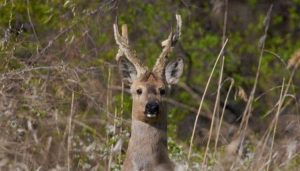
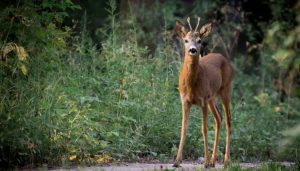
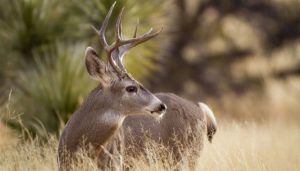

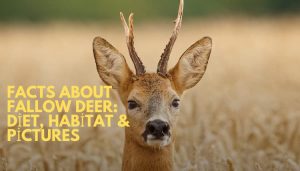
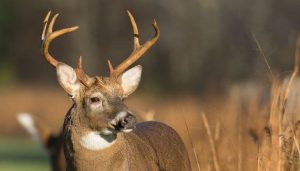
Leave a Reply